Missoni’s third installment of its “Surface Conversion” series is underway, open to the public in the brand’s Madison Avenue boutique in New York. The annual event is a chance for the brand to immerse visitors in a a special environment special. For 2018, we got a taste of “Dreams of Being” by artist Rachel Hayes, which greets guests to a colorful oasis—an artistic dream she originally created out of hand-sewn tapestries for the Missoni’s Spring/Summer 2018 fashion show set, and for the collection’s campaign thereafter.
Undeniably, we noticed similarities between the work of Hayes, and the unforgettable work of Missoni—unapologetically colorful, refreshing, and bold. And after speaking with the artist, we got a larger sense of the inner-workings within a family, and longevity of seasonal collections that last a lifetime.
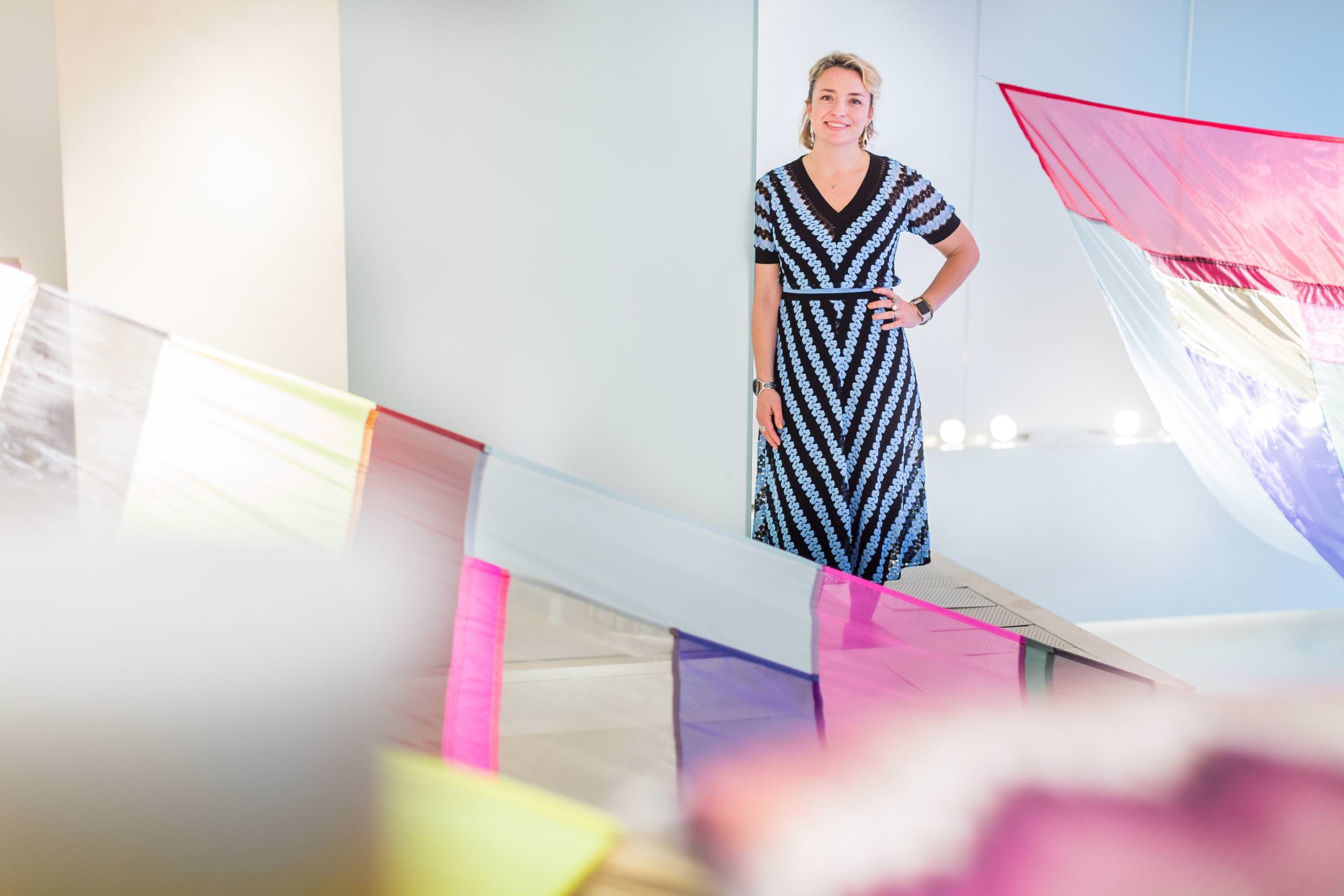
Rachel Hayes.
Photo by Scott Rudd.
Courtesy of Missoni.
To hear more about “Dreams of Being,” gaining inspiration from traditional craft, and working with color, scale, and family, Whitewall spoke with Hayes.
WHITEWALL: You first worked with Angela when you created the geometric patchworks for the SS18 show, which later appeared in the campaign. Tell us a bit about your starting point for that.
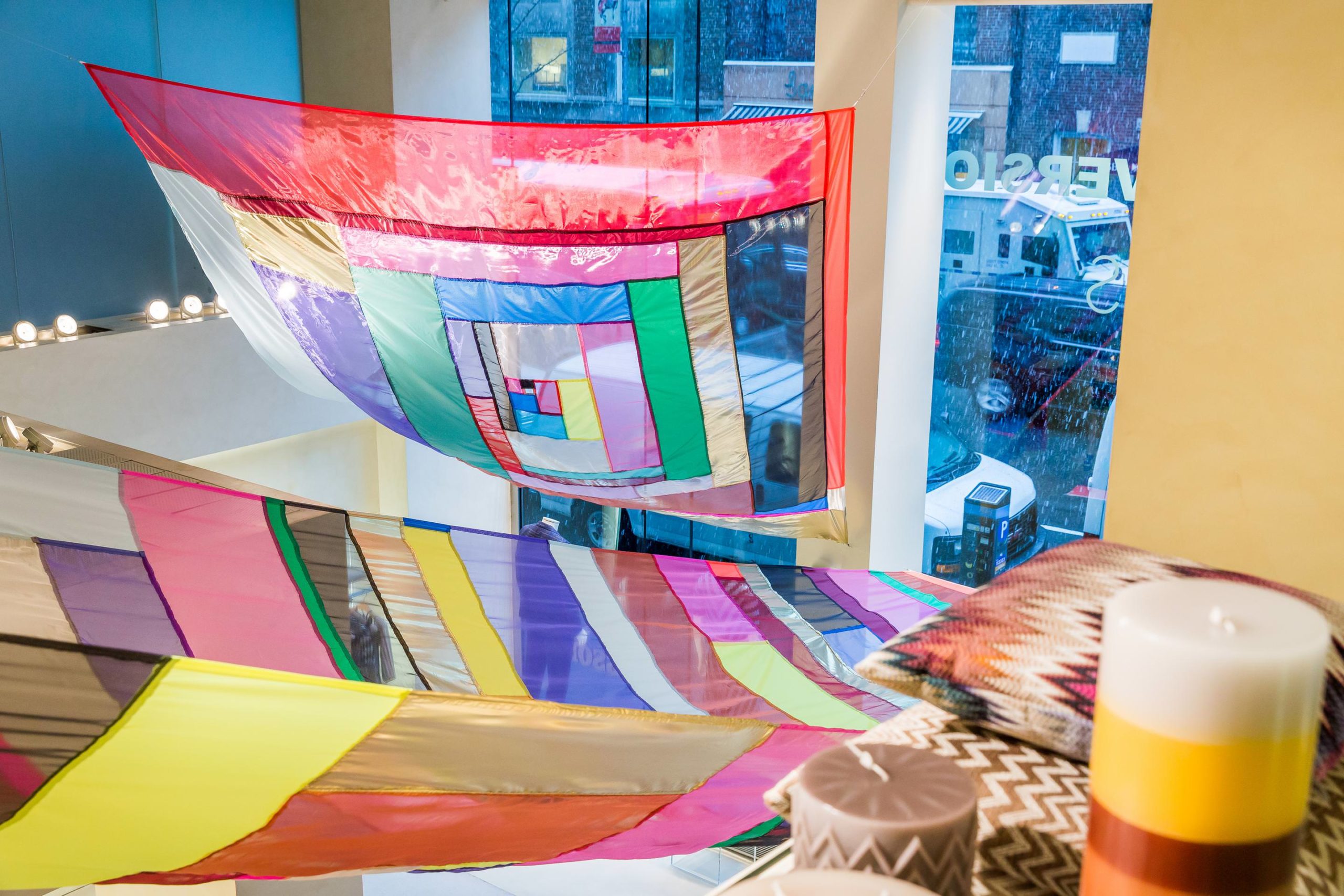
Photo by Scott Rudd.
Courtesy of Missoni.
RACHEL HAYES: One of the patchworks Angela liked I had actually started in my studio in Brooklyn in 2010. I had just read a book about the quilts of Gee’s Bend and was very inspired by the story of women using what materials they had on hand. I worked on this patchwork panel for several years off and on. When it was about 12-feet-by-12-feet, I showed it at a gallery in New Hampshire, and later hanging from a tree in Prospect Park as part of an outdoor sculpture show. I added on to it with more and more strips of fabric until it was 35-feet-by-35-feet and then showed it as part of the DUMBO Arts Festival in Brooklyn, where, for 3 days, it hung outdoors as a canopy along the river. Later, I took photographs of it at White Sands, New Mexico, flying it through the air, and laying it in the sand. I’m open to my work having many lives and am not beholden to one setting.
This 35-feet-by-35-feet sewn panel ended up being the smallest of the five I created for the SS18 show for Angela. This piece has a great story, and a full life already, but maybe it will be seen again.
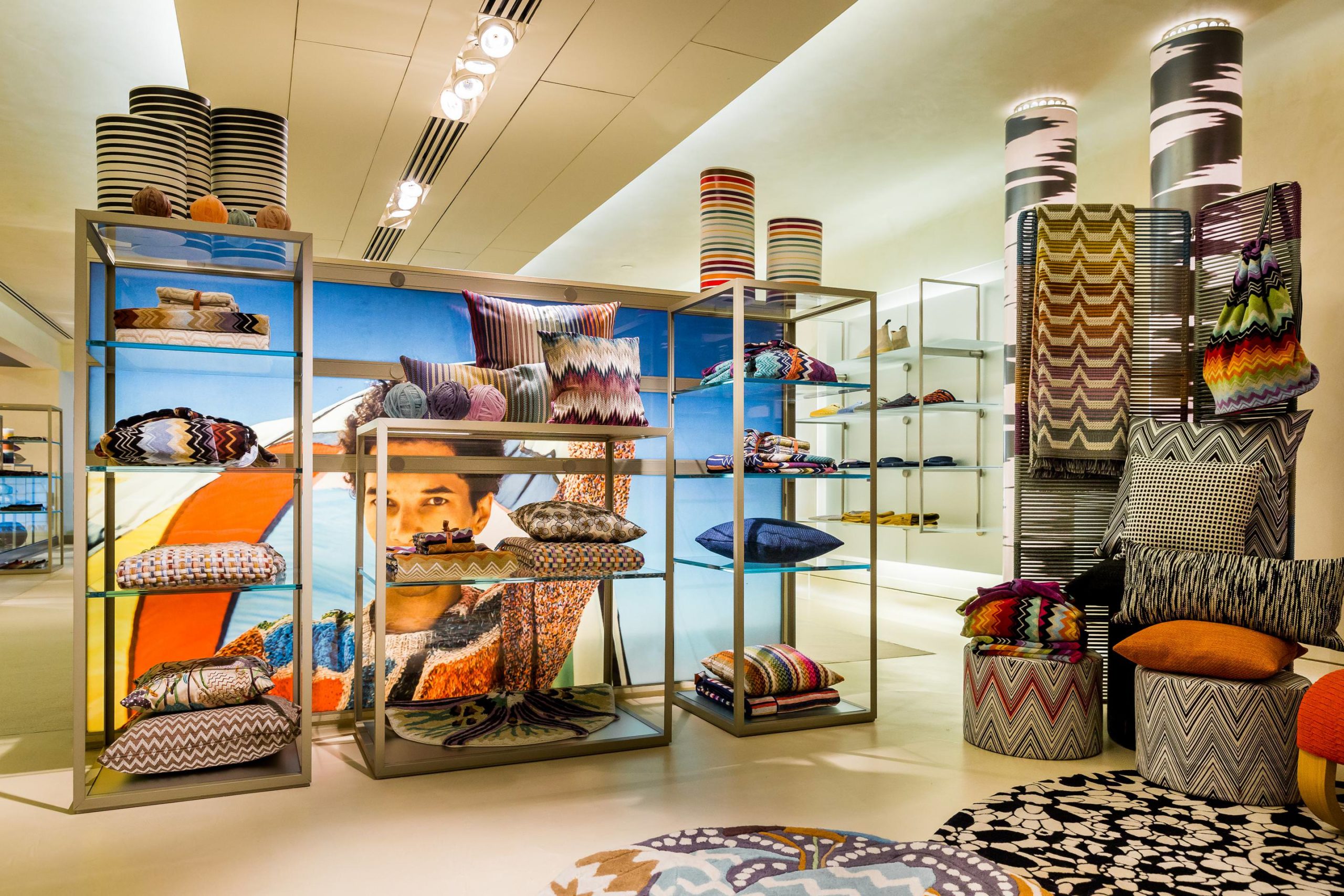
Photo by Scott Rudd.
Courtesy of Missoni.
WW: Tell us a bit about your installation for Missoni’s Surface Conversion. What was important for you to include? What did you want the viewer to take away?
RH: Chiara Rusconi (at A Palazzo Gallery) and I decided to take advantage of the Missoni boutique’s space above the stairs, located in the center of the store. Because of the length of the space, and the length of the panel (30+feet), structurally it would hang with a nicer swag if it was mostly stripes, and this plays off the horizontal lines of the stairs, as well. I brought extra pieces to ‘play’ around with in response to the panel over the stairs. In terms of the space of the boutique, there is a huge amount of volume overhead to work with, so I wanted to have the panels hang from the ceiling and overlap each other ever-so slightly, in the way they did for the runway installation. I hope viewers can walk away with a smidge of the emotion that was created at the runway show. A new space is created, within the store, that can envelop the visitors. Perhaps one has been to the store many times, and never noticed how high the ceilings are, or that there is a sharp angle created with the artwork in response to the staircase. Maybe viewers will take the path upstairs, and on their way down notice how the colors change when the panels overlap.
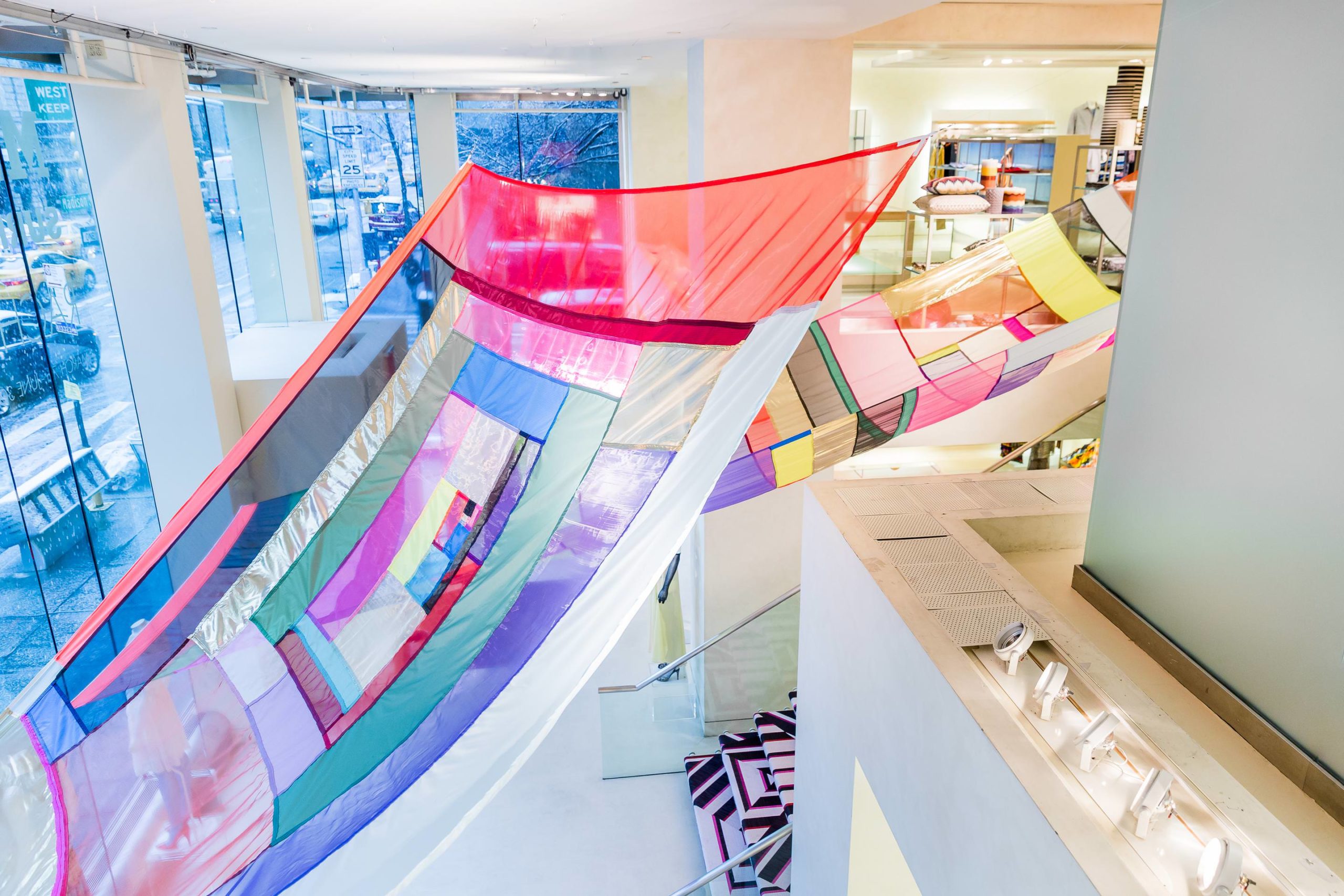
Photo by Scott Rudd.
Courtesy of Missoni.
WW: What about the brand speaks to you as an artist?
RH: Now that I have visited Milan, seen the showroom, witnessed a fashion show, and been immersed in the Missoni world, I’m definitely paying more attention to the similarities and differences between us. I have no idea how they choose the rhythm of their palette, but there is a rhythm of darks/lights, opaque/sheer, vibrancy/dullness, and when I am working on a piece, this is very important to me, as well. To touch and see all the textures in person has been very inspiring. In fact, I added gold lamé into the Surface Conversion installation, in response to how shimmery so many of the textiles are in the new collection.
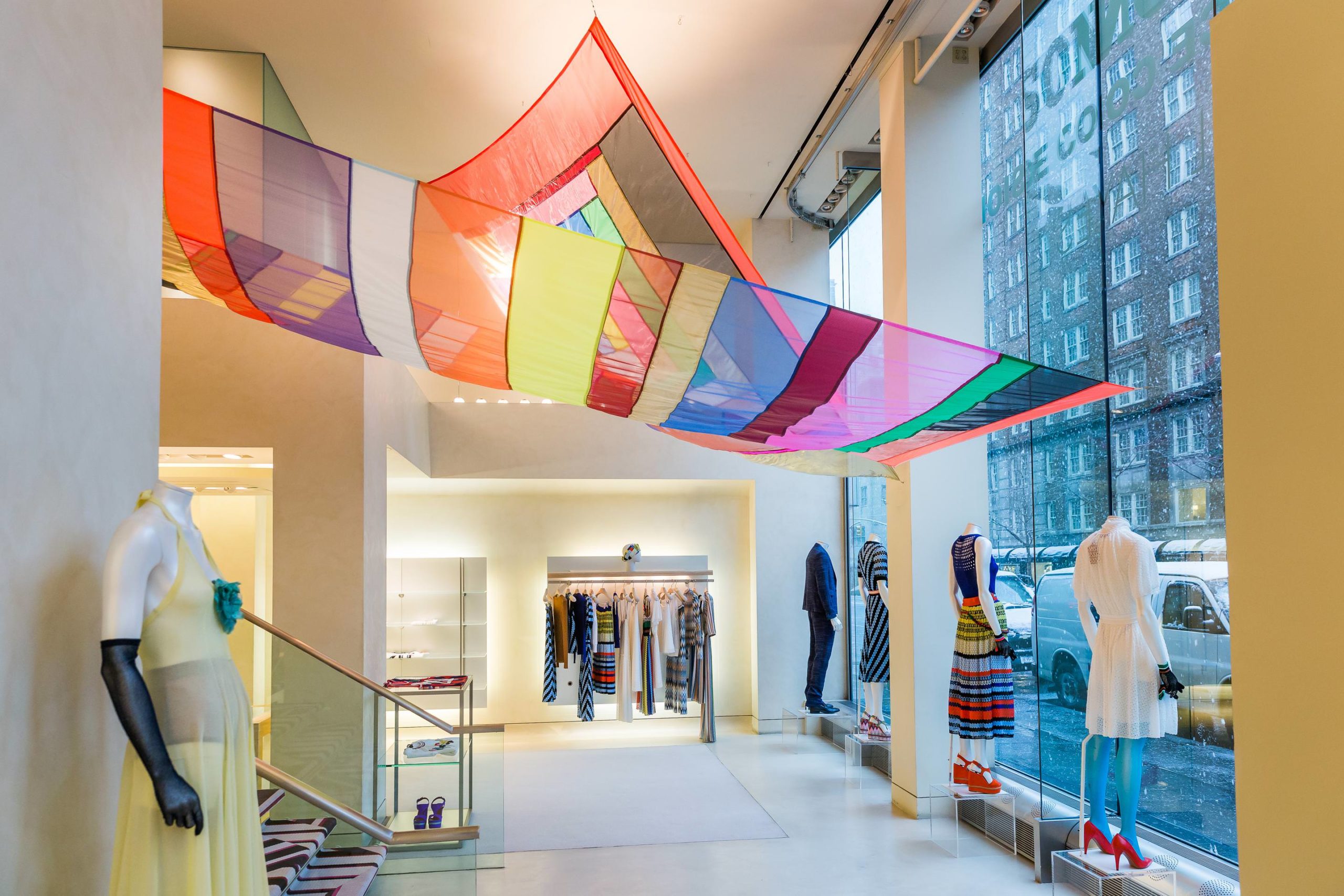
Photo by Scott Rudd.
Courtesy of Missoni.
I love the story of the Missoni family. My grandparents, parents, brother, cousins, and in-laws have always been so supportive of me becoming an artist, and have helped me cut, sew, install, and travel for my art. Now that I have my own family, I often take them with me. It’s inspiring to see multi-generations working together and supporting one another in the Missoni brand.
Sewing these panels is one way that I work, but I also weld, and use basketry and found objects to create sculptures and collages. Working on this collaboration, and seeing how a brand creates 40 “looks” or so, but as part of a larger story, sheds new light on how I can step back and think of my work as a story, or a group of seasonal collections, all evolving together, but over the course of my lifetime. It’s in hindsight that I often see how all my works interplay with each other; the photography, sculptures, installations, tapestries…how will the next twenty years unfold? It’s exciting to think about for myself and for Missoni, too, I’m sure.
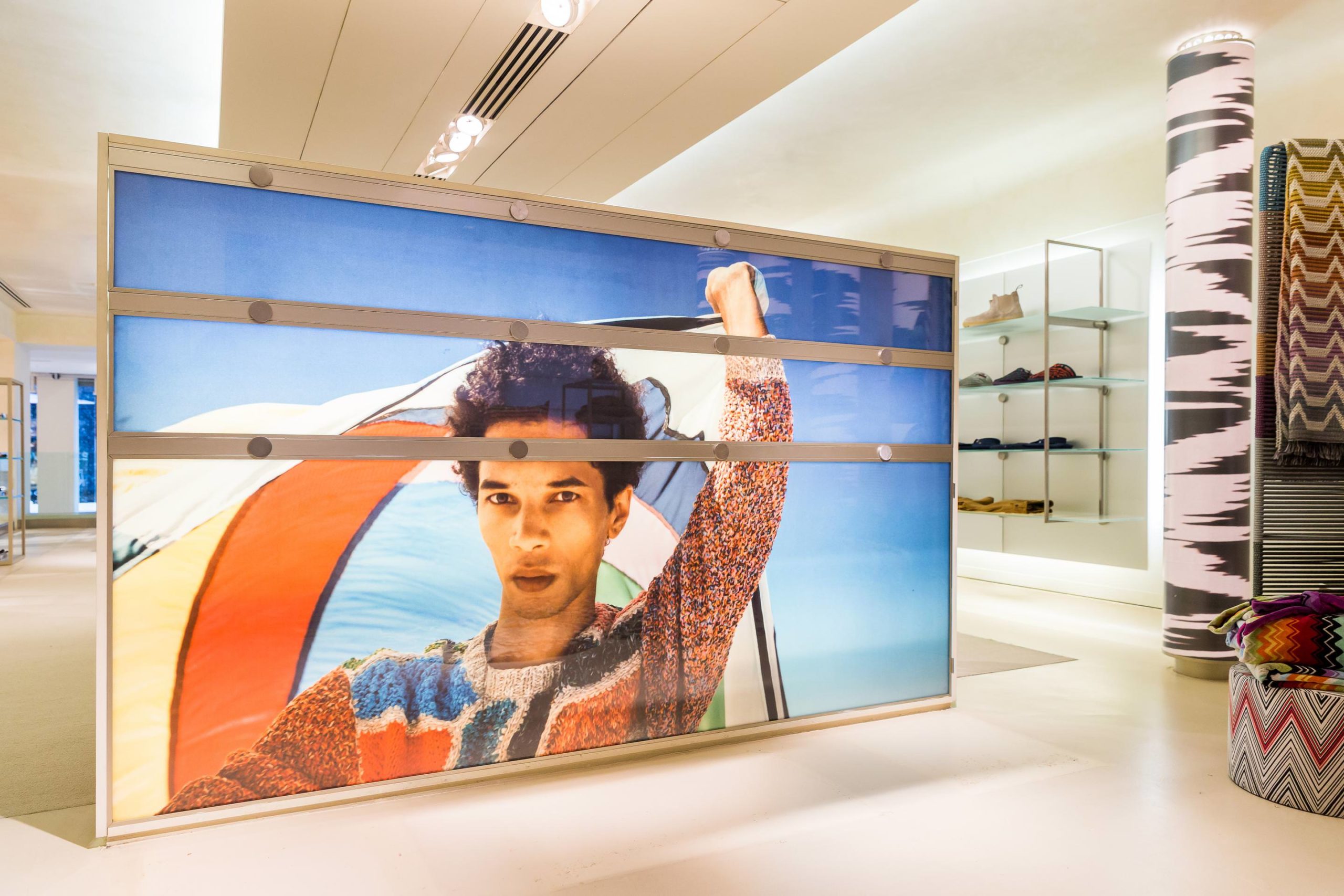
Photo by Scott Rudd.
Courtesy of Missoni.
WW: Your colorful works have graced both small and large spaces, in an array of fabric materials. What was your very first piece? How has your practice evolved or stayed the same?
RH: I had a dream about someone asking me this question long ago, and I can describe the first three important works, the first of which I made as a teenager. In high-school, I made a self-portrait out of all these vintage buttons and costume jewelry from my great grandmother. I glued and sewed them onto red velvet. Looking back, I love how my parents weren’t precious with these beautiful objects. Then, in college, I made another self-portrait, a second skin that lays out flat on the wall, that I sewed out of all my old clothes. My mom taught me how to use her sewing machine, which led to the creation of this abstract patchwork. Then, in 2000, I had my first gallery installation. I remember the works were dictated by the size of the massive wall in the gallery space—and not by the size of the tiny apartment I had at the time. I had recently visited NYC and came home with several colors of sheer colored vinyl. I had also seen a large Richard Serra installation for the first time, as well as many painting shows in Chelsea with my husband, the painter Eric Sall. I was inspired to use scale and color, but in my own way—building soft walls with my sewing machine, but reading the sewn walls as giant painting compositions. These three works say a lot about my practice still, and it’s almost 20 years later….
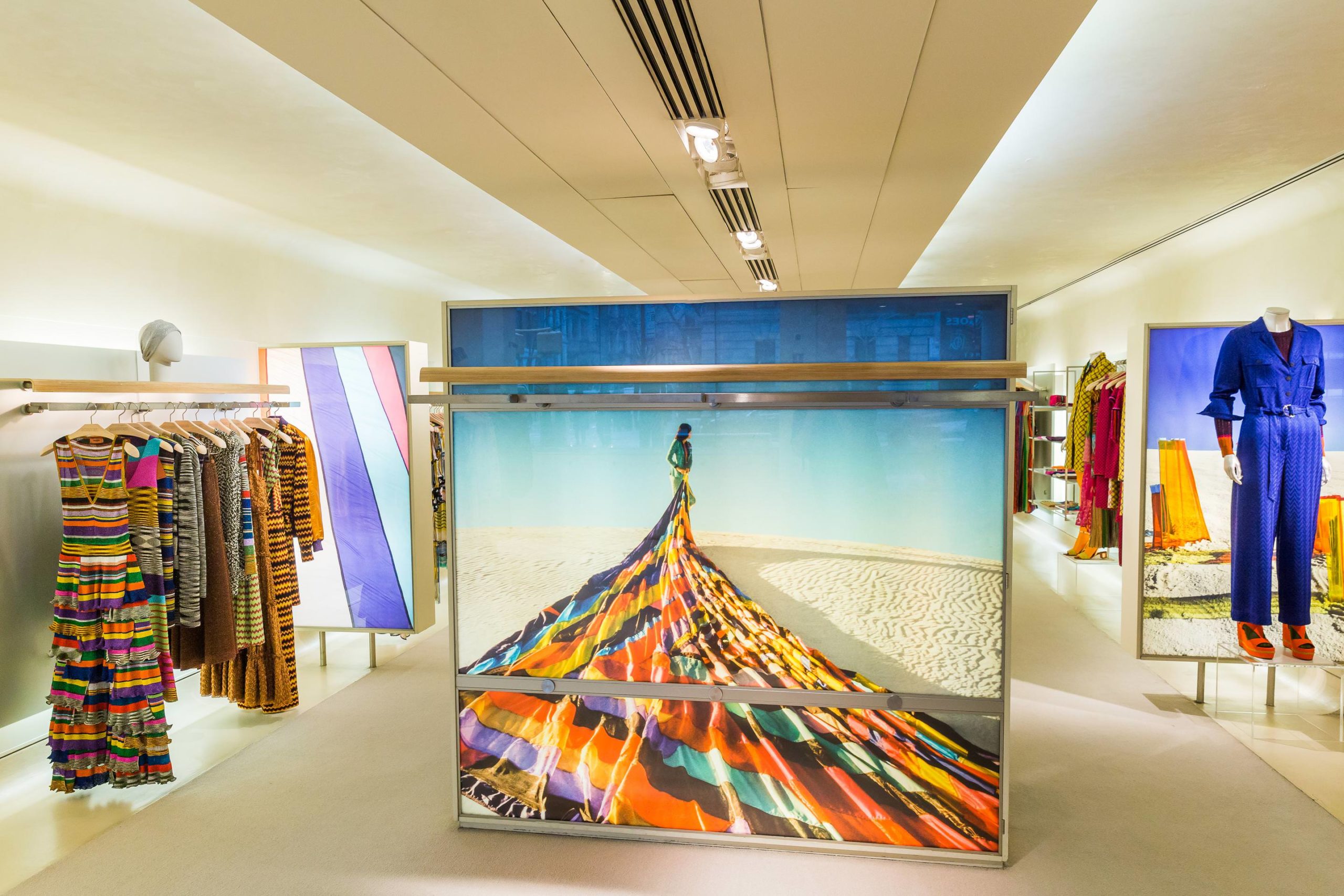
Photo by Scott Rudd.
Courtesy of Missoni.
WW: You’ve mentioned being inspired by the traditions of quilt-making, and the artistry of sculpture, painting, and stained glass. What is it about color, its reflection and its power, that you are drawn to?
RH: Color has the power to catch attention and bring someone into a piece with a guttural reaction, and it’s a building tool for me as well. When I start working, I’m putting one color next to each other, adding one color at a time to keep up the momentum of a piece. Color is so emotional to me, and I liken it to the power that music can have. It is so soothing to me to put two colors together, and something just feels right. Sometimes it is nice to be unpredictable as well, and try to mess up the rhythm. I use color very intuitively, and rarely have a piece planned out exactly.
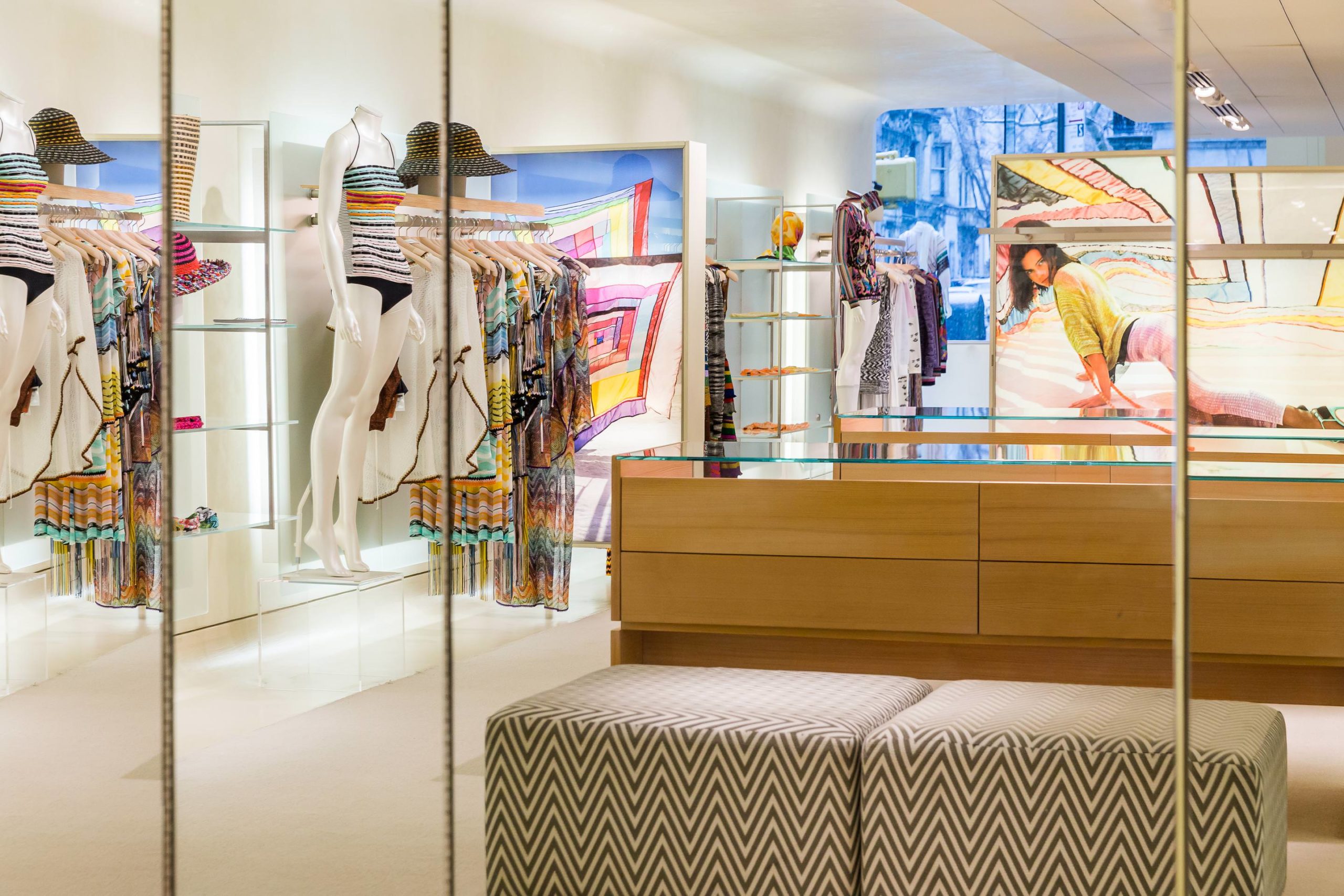
Photo by Scott Rudd.
Courtesy of Missoni.
I acknowledge how color works in different materials, light penetrates glass and plastic, and can throw color throughout a space, giving color volume. I like to take advantage of these different properties, so it is important to let fabric have the swag, let the layers build up, let sun-light shine in, or get dramatic with lighting, let the wind do its thing outside, and not fight it, let shadows happen, let the work have a life.
WW: Tell us a bit about the residency you most recently participated in, and what you gained from that experience.
RH: My husband and I were both invited to participate in a new residency called the Tulsa Artist Fellowship. The residency is incredibly generous with its financial support for artists, and I’m grateful to have the time to devote to projects like this one I did with Missoni.
Tulsa, OK is an old-wealthy, oil-boom town, and a former baron’s Italian Villa is now the Philbrook Museum, which is where I have an installation up through November. A cornerstone of the museum’s collection is Native American art, and we are near the headquarters of several Native American tribes who moved to the region after the Indian Removal Act in 1830. There was a Tulsa Race Massacre here in the 1921, in the heart of Black Wall Street, and pretty close to where the residency is located. I have learned so much from my fellow artists, and am inspired by their activism for equality and artists’ rights. This region has a very complicated American tale.
WW: You said, “Scale and color consume a space, yet there is balance with the delicately sewn stitches and understated shadows, therefore maintaining a strong physical and material presence while remaining sensuous and experiential.” How do you create that balance?
RH: In this most recent example of the installation at Surface Conversion, I want to be bold, but I don’t want to take over. If something is huge in scale, and bold in color, I find the nuance in the small layering that you may not notice right away. For example, at 3pm the sun shined through both pieces, enhancing the layering, and causing the organza to shimmer beautifully. However, what is the nuance at night? Perhaps it’s from across the street, and picking up on all the horizontal lines, or looking down from the second floor. If a jacket is bold in color and catches your eye across the street, isn’t it even more awesome if that jacket has three textures, a beautiful button, and a surprising lining? That is the balance, finding the personal moment within a bolder situation.
WW: You’ve also applied photographs to various surfaces to create a sensory experience. What are these photographs of? How did you decide to incorporate that unique aspect?
RH: I remember photographing the light coming through the window onto a piece in my studio, getting the film developed, and being able to share that ‘view’ or moment with friends. I have a box of detail shots from years ago.
Then I started photographing my installations while they were in progress more, and realized that sometimes what would happen during and in between can be way more thrilling than the final product I would set out to create…especially when working outside. When sun and wind add an unpredictable element, it’s very exciting.
Eventually, I decided to create more ephemeral installations outside, without the pressure of a dedicated life-span, capture the moments, and fully invite this documentation to be a part of my story. Sometimes these pieces are small weavings catching the sun-light, sometimes it’s a giant panel raging in the wind.









